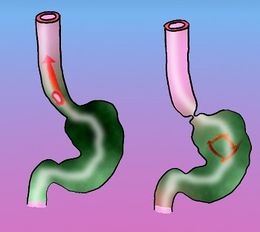It is a low-frequency pathology that affects esophageal motility as a result of the myenteric denervation of the esophagus and also, in a large proportion of cases, of the stomach . Its causes remain still poorly clarified and their diagnosis is still delayed, reporting a lag of at the least 5 years from the onset of symptoms, often confused with diseases such as disease by gastroesophageal reflux disease , among others. For this reason, it requires a high index of suspicion and a thorough study, with esophageal manometry being the gold standard.

Etiology
Achalasia was the first esophageal motility disorder to be recognized clinically, and can be defined as a disease of unknown etiology, characterized by the absence of peristalsis of the esophageal body and the inability of the lower esophageal sphincter (LES) to relax in response to the swallowing (the term achalasia etymologically expresses ” sphincter failureto relax”). Both motor alterations determine esophageal dilation (megaesophagus) with food stasis, responsible for most of the symptoms and complications of this disease. In this manuscript, a review of esophageal achalasia from a clinical point of view will be carried out, emphasizing those eminently practical aspects. Thus, the review will focus primarily on clinical manifestations, diagnostic methods and therapeutic alternatives.
Treatment
Treatment is currently not curative, and is focused on relieving symptoms. The surgical alternatives available are Heller’s myotomy, endoscopic dilation, and the most recent peroral endoscopic myotomy (POEM). Medical treatment has not shown good results and nowadays it has restricted indications.
